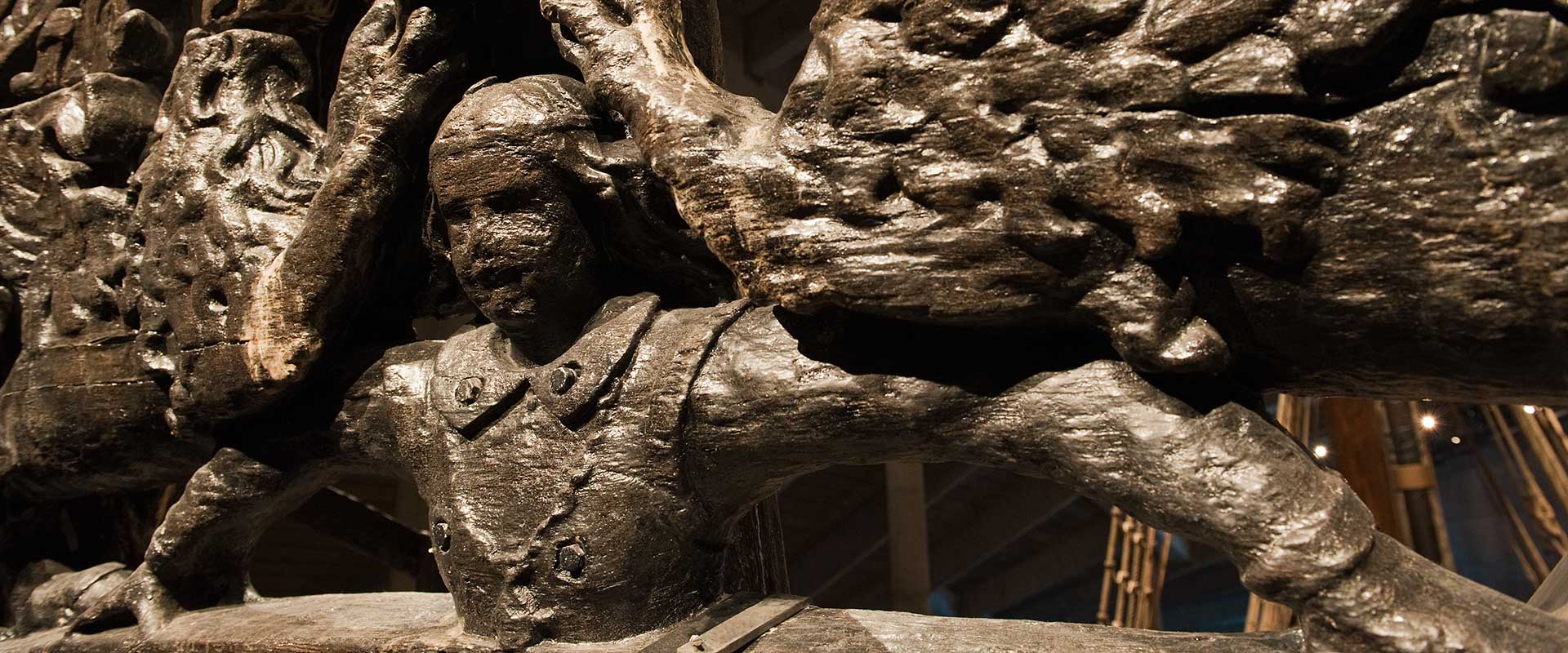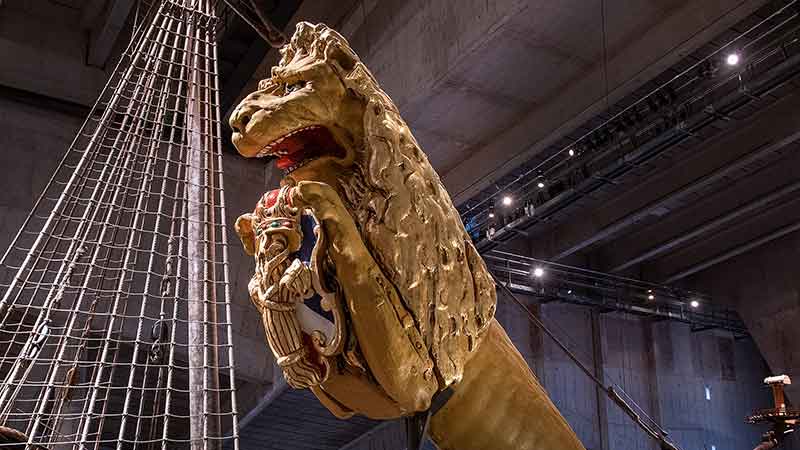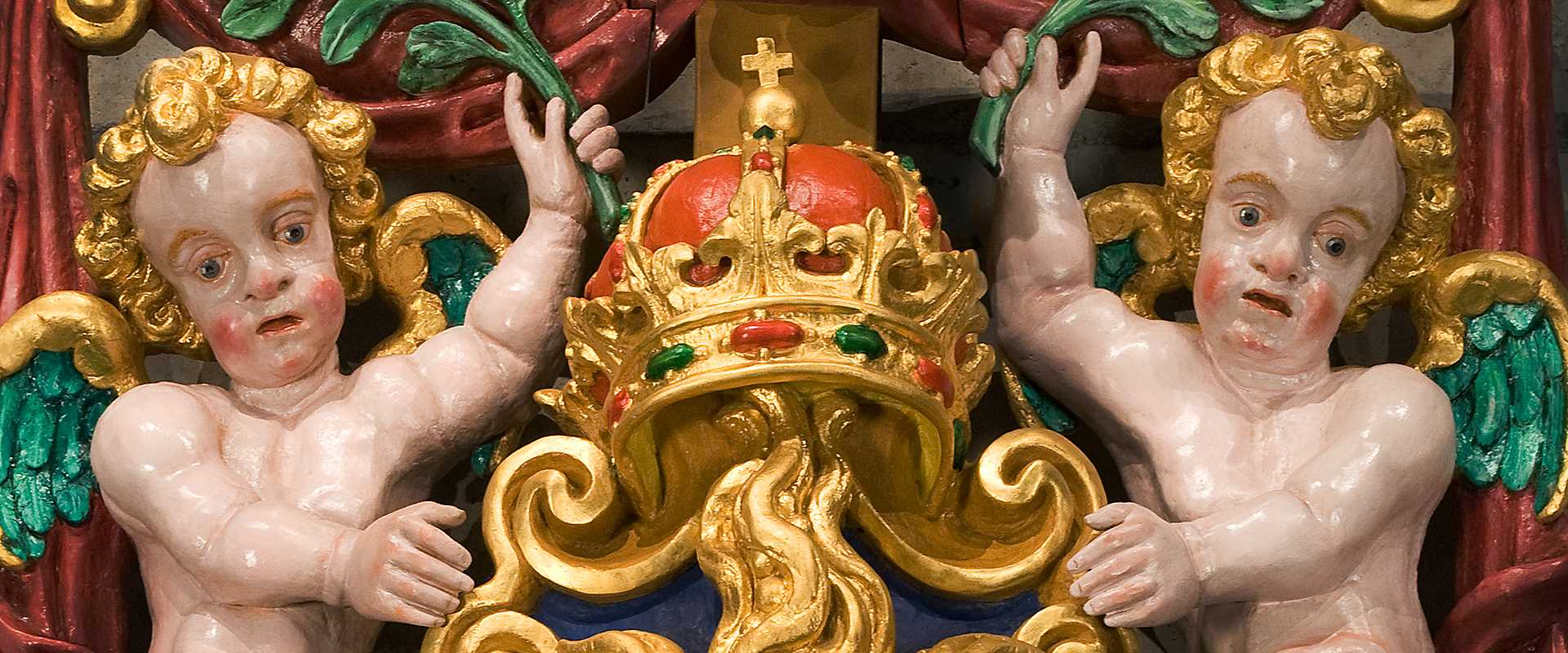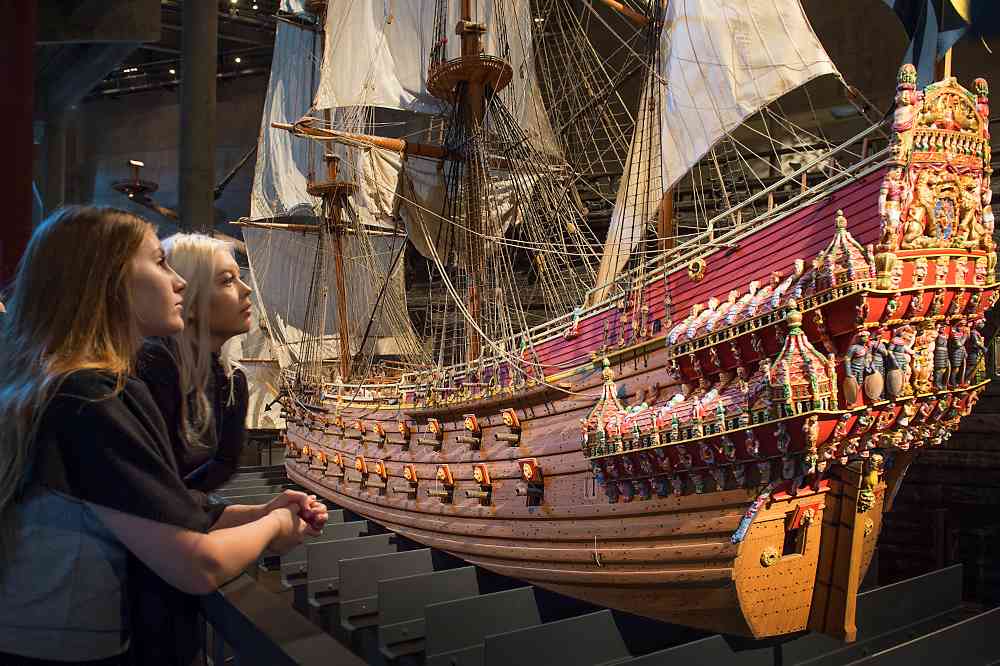Painted in bright colours and with several hundred sculptures, Vasa was a colossal work of art that would make the rest of Europe admire and fear King Gustav II Adolf. An advertising campaign from seventeenth-century Sweden with an enormous budget.
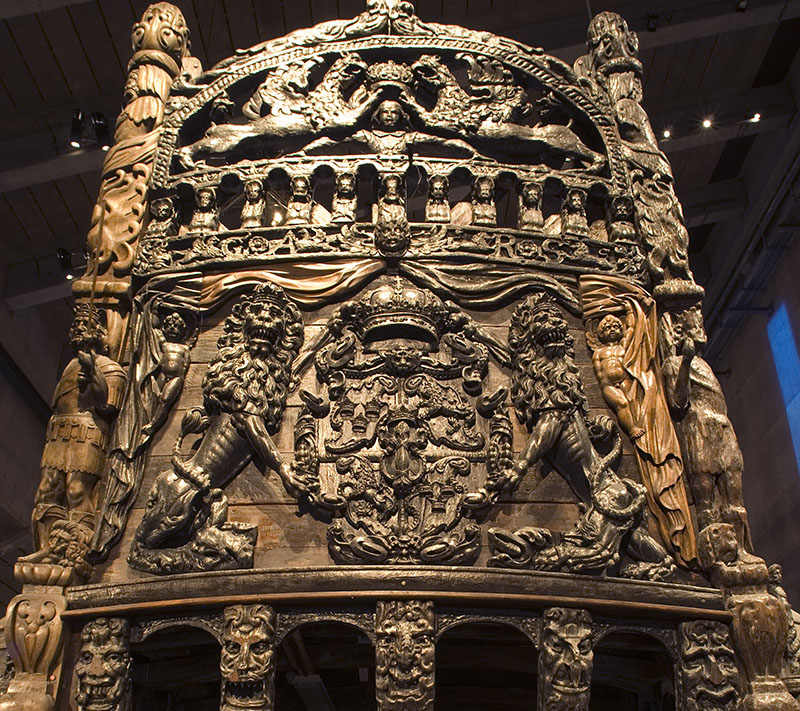
Vasa was not just a warship; it was also intended to be a grand display window for Sweden and King Gustav II Adolf. There were over 700 sculptures and decorations on the ship. The splendour aimed at impressing spectators, but also carried a clear message. The sculptures were supposed to convey that Gustav II Adolf was the rightful king and that he had God on his side.
On both sides of the beakhead, a projecting platform at the bow, sat a total of twenty sculptures of Roman emperors, with the figurehead – a three-meter long lion – ahead of them. The lion holds the coat of arms of the Vasa dynasty in its front paws. The lion on the beakhead also symbolised the Roman emperor Augustus. The intended message was that Gustav II Adolf was an heir to the emperors of the Roman Empire, and was going to build his own empire.
The transom, all the way at the stern of the ship, was teeming with sculptures. At its top was a sculpture depicting Gustav II Adolf in his youth, holding his arms over his people. Below this were the Swedish coat of arms and the biblical Gideon, with his warriors. The story is taken from the Old Testament in the Bible, and tells of how Gideon saved the Israelites by defeating the large invading army of the Midianites with a force of only 300 men.
Further down on the transom was another biblical figure, David, known both for killing the giant Goliath and for becoming a wise king. Both Gideon and David were heroes well known by the Swedish people and were seen as the evidence that it was possible to defeat a superior enemy, if you had God on your side.
On the transom are also two sculptures depicting Hercules, the hero of Greek and Roman mythology, who performed twelve great labours. He symbolized characteristics such as strength, bravery, energy and wisdom.
Insulting the enemy
On Vasa, there were sculptures from Greek and Roman mythology, the Old Testament, and the Roman Empire. Others depicted actual or fictional persons from Swedish history, and armed warriors with suits of armour. But the ship was also adorned with things like lions, mermaids, angels, monsters and devils.
A couple of the sculptures were aimed directly at Poland, with whom Sweden was at war for many years in the 1600s. From the toilets that were located in the beakhead, the crew had a view over two carved Polish noblemen, with typical moustaches, hair styles and knee-length coats. At this time there was a tradition in Poland that a person who had offended his friends could be forced underneath a bench or table to ”bark off”- that is to confess to his crimes and ask for forgiveness. The sculptures remind the crew how the dreaded enemy is humiliated and confesses his vileness.
Colours that stood out
Mårten Redtmer, a German and one of the seventeenth century's master sculptors, carved several of the most important sculptures on Vasa. Dutchman Johan Thesson and German Hans Clausink were two other sculptors who worked with the ship's ornamentation, together with an unknown number of assistants.
When the sculptures and other ornamentation were completed, they were painted and some parts gilded. From 1990 to 2002, conservator and art historian Peter Tångeberg researched how Vasa had been painted. Approximately 1200 colour samples from the ship were analysed, and the results are fascinating: Vasa was a very colourful ship when she embarked on her maiden voyage in 1628. The sculptures were painted in numerous strong colours, with abundant use of gold leaf.
Most of the hull was tarred, which gave it a red-brown tint. But a large part of Vasa was painted bright red: the bulwarks, (the upper parts of the ship's sides), the transom, the quarter galleries and the sides of the beakhead. The railings and prominent mouldings were bright orpale yellow.
Vasa was not camouflaged to fade into the background. The exact opposite applied: the ship would be impossible to miss. The word did not exist in the Swedish language in the 1600s, but Vasa was a gigantic billboard for Sweden and Gustav II Adolf.
